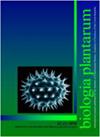未来农业气候条件及其对欧洲草原的影响
IF 0.9
4区 生物学
Q4 PLANT SCIENCES
引用次数: 6
摘要
草地在畜牧饲料生产中发挥着重要作用,因此有助于全世界的粮食安全,同时提供许多额外的生态系统服务。然而,迄今为止,尚未研究欧洲草原地区与草原相关的农业气候条件和不利天气事件将如何变化。使用由气候站定义的476个欧洲地点的土壤和管理的单一参考设置,我们显示了在气候变化下发生八次可能显著影响草原生产力的选定不利天气事件的可能性,以及这些事件在整个欧洲的区域变化。这八个关键农业气候指标的变化形成了明显具体的空间格局。我们发现,到2050年,南欧和西欧草原面临的高温和干旱可能会比今天增加一倍,高温和干旱频繁发生的地区将向北扩展。然而,在乌克兰、白俄罗斯和波罗的海国家以及芬兰和瑞典南部,发生这些事件的可能性可能会降低。虽然改变品种和管理策略是不可避免的,但由于关键草原生长区以外的不良事件风险进一步增加,将草原生产转移到其他地区以降低风险可能是不可能的。此外,我们发现欧洲各地区的整体热力和水资源状况发生了显著变化。与欧洲地区相比,世界其他地区未来不利天气事件的影响可能有所不同,这强调了对其他主要草原生产地区进行类似分析的重要性。为了减轻气候变化的影响,需要开发维持草原生产力的新方法。这些方法包括为特定地区更有效地选择物种混合物,包括增加豆类和杂类植物的使用;引入新的遗传资源,包括开发杂交品种,如Festullium杂交种;以及将最先进的技术纳入育种计划和新的放牧管理。本文章由计算机程序翻译,如有差异,请以英文原文为准。
Future agroclimatic conditions and implications for European grasslands
Grasslands play a significant role in livestock fodder production and thus, contribute to food security worldwide while providing numerous additional ecosystem services. However, how agroclimatic conditions and adverse weather events relevant for grasslands will change across the European grassland areas has not been examined to date. Using a single reference setup for soil and management over 476 European sites defined by climate stations, we show the probability of eight selected adverse weather events with the potential to significantly affect grassland productivity under climate change and how these events vary regionally across Europe. Changes in these eight key agroclimatic indicators create markedly specific spatial patterns. We found that by 2050, the exposure of the south and west European grasslands to heat and drought may double in comparison with today and that the area with frequent occurrences of heat and drought will expand northwards. However, across Ukraine, Belarus, and the Baltic countries to southern Finland and Sweden, the likelihood of these events is likely to decrease. While changing cultivars and management strategies are unavoidable, shifting grassland production to other regions to reduce the risk may not be possible as the risk of adverse events beyond the key grassland-growing areas increases even further. Moreover, we found marked changes in the overall thermal and water regimes across European regions. The effect of adverse weather events in the future could be different in other regions of the world compared to regions in Europe, emphasizing the importance of conducting similar analyses for other major grassland producing regions. To mitigate the impact of climate change, new ways of maintaining grassland productivity need to be developed. These methods include more efficient selection of species mixtures for specific regions, including increased use of legumes and forbs; incorporation of new genetic resources, including the development of hybrid cultivars, such as Festulolium hybrids; and incorporation of state-of-the-art technologies in breeding programs and new grazing management.
求助全文
通过发布文献求助,成功后即可免费获取论文全文。
去求助
来源期刊

Biologia Plantarum
生物-植物科学
CiteScore
2.80
自引率
0.00%
发文量
28
审稿时长
3.3 months
期刊介绍:
BIOLOGIA PLANTARUM is an international journal for experimental botany. It publishes original scientific papers and brief communications, reviews on specialized topics, and book reviews in plant physiology, plant biochemistry and biophysics, physiological anatomy, ecophysiology, genetics, molecular biology, cell biology, evolution, and pathophysiology. All papers should contribute substantially to the current level of plant science and combine originality with a potential general interest. The journal focuses on model and crop plants, as well as on under-investigated species.
 求助内容:
求助内容: 应助结果提醒方式:
应助结果提醒方式:


